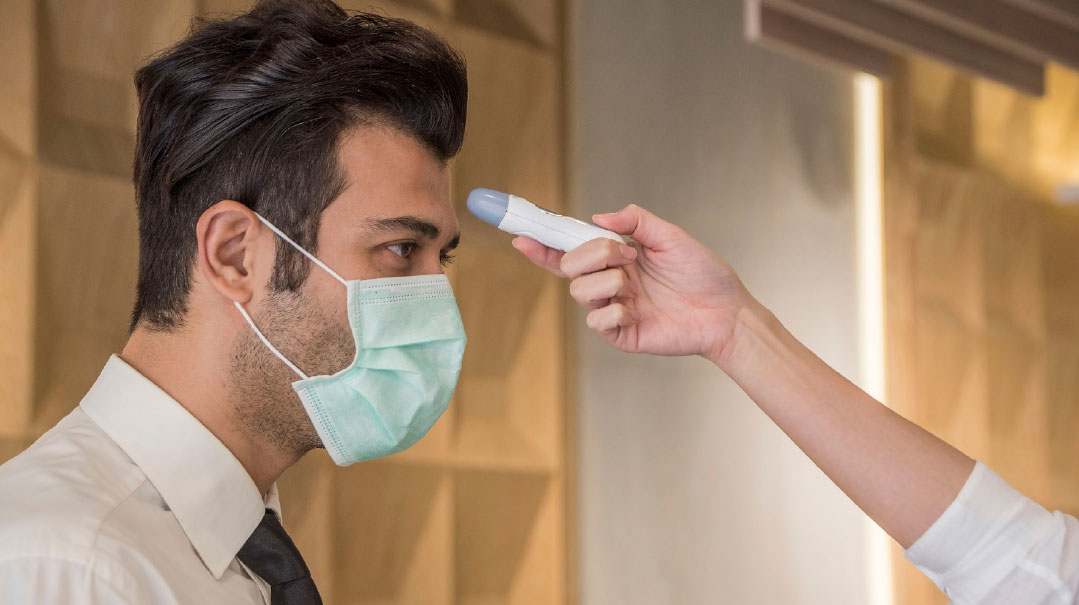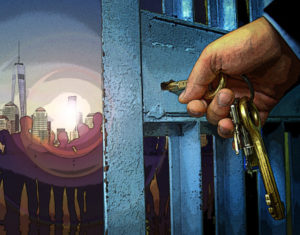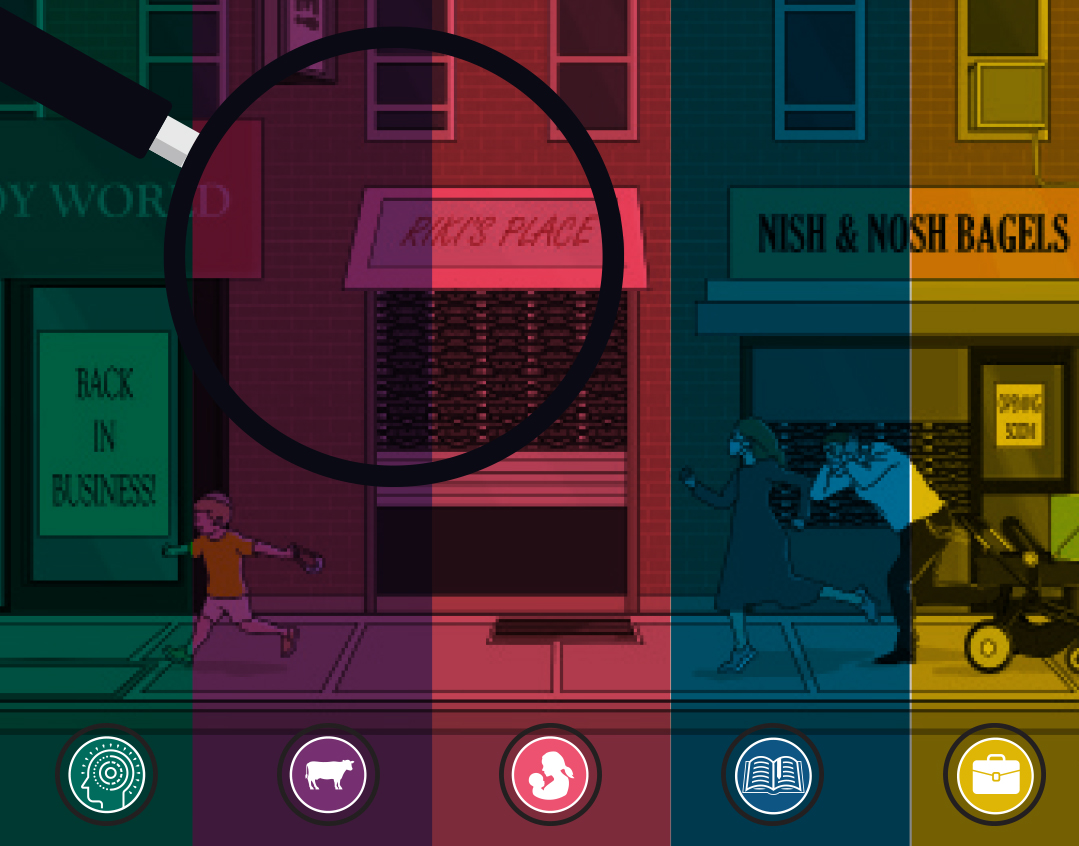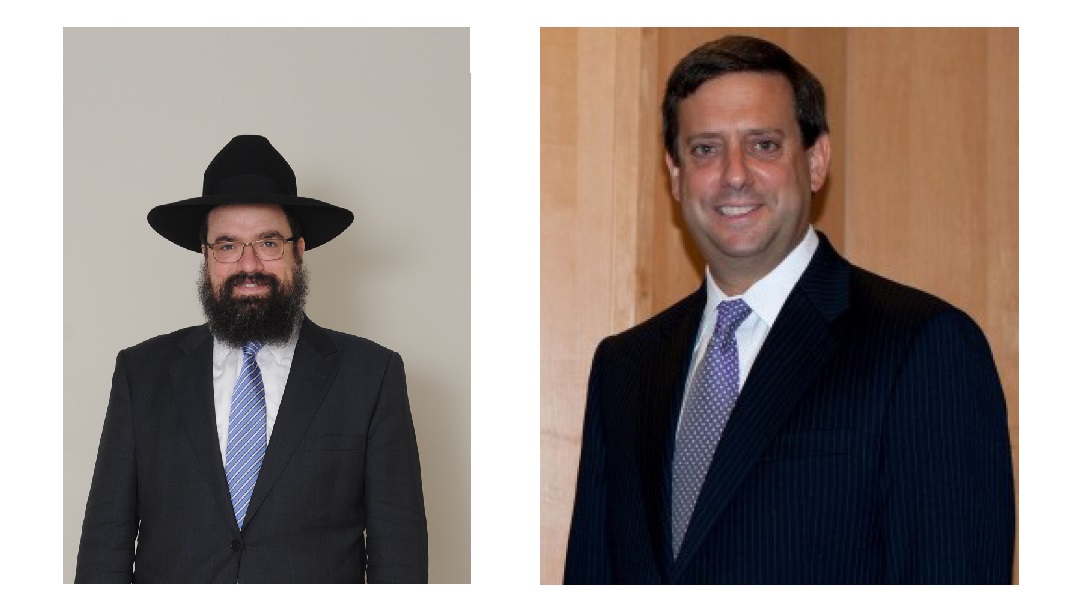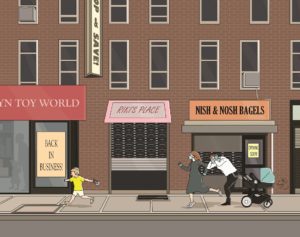Just the Facts
| June 3, 2020A COVID-19 Primer: Your guide to life in a socially distanced reality
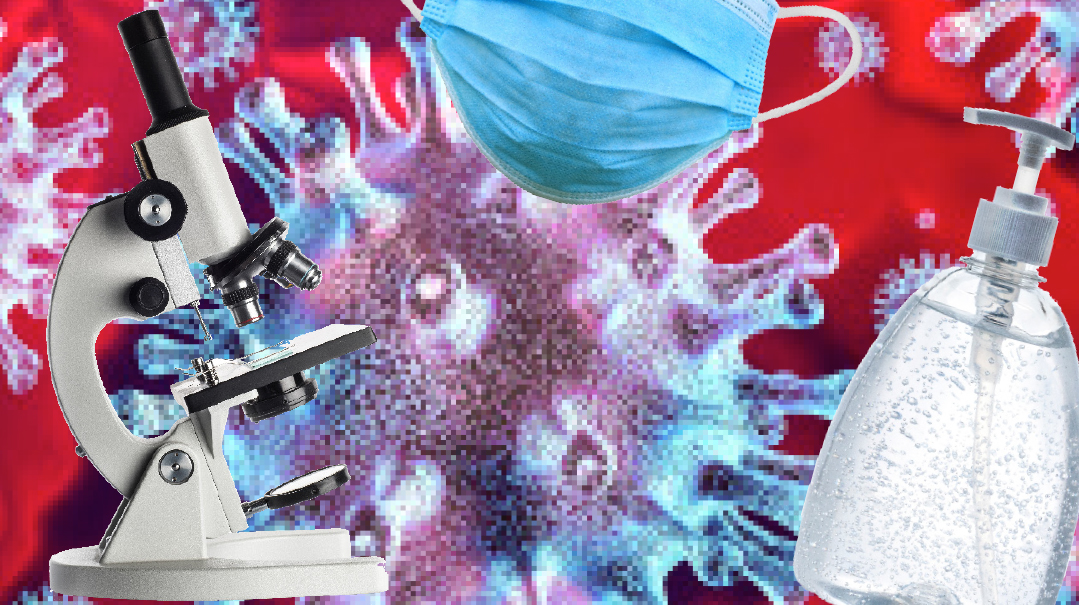
Chava Ruderman, a graduate of Albert Einstein College of Medicine, is a board-certified internist currently completing a second residency in public health and preventive medicine. She is a medical advisor for the COVID Plasma Initiative. Aliza Rubenstein holds a PhD in quantitative biomedicine with primary research interests in host-based diagnostic assays; the lab she is in is currently researching diagnosis of COVID-19. She has been involved in the COVID Plasma Initiative since its inception.
It’s been months since we first encountered the coronavirus and by now we’re all battle-hardened, weary, and anxious. We see no end in sight and uncertainty on all sides.
We hear opposing narratives and conflicting guidance on an hourly basis. When will this be over? When will we finally return to a normal life? And until then — how do we proceed?
Given the novelty and unpredictability of the COVID-19 pandemic, medical guidance has undergone numerous shifts as new data shapes directives. At the same time, getting our news online or on social media leads to a rise in misinformation that can easily “go viral.” Here are some common myths that we have all been hearing, contrasted with the latest scientific information that is available to us.
Myth 1
We all got it already — just look at the number of Orthodox Jews with antibodies! Herd immunity has been achieved.
The Facts: “Herd immunity” — where a certain percentage of the population has developed immunity to a particular infection — is usually achieved through vaccinations. Some have suggested that we can reach herd immunity for COVID-19 even without a vaccine, by allowing enough individuals to become naturally infected and develop their own antibodies to the disease. There are a few problems with that approach.
No test is accurate 100% of the time, but COVID-19 antibody tests are particularly difficult to interpret, as results vary based on the type of test used and at what stage the test is administered. Compounding the uncertainty, we don’t yet know what level of antibodies is required to confer immunity, or how long that protection might last.
Even if the immunity conferred by having the disease is complete and lasting, based on the current infection rate of COVID-19, at least 60%–80% of the population would need to be immune to achieve herd immunity — and we remain very far from that point. Allowing the infection to spread unchecked for as long as it takes to reach herd immunity in the general population would come at the devastating cost of immense amounts of sickness and death. (Consider that over 20,000 people died in NYC alone, while at most 25% of the city has been infected.) And importantly, even once herd immunity is reached, the epidemic does not end instantly. Like a car slowing down, it takes time to reach a stop, and more people get infected along the way.
An oft-heard remark is that we have been so hard-hit in the Orthodox community that we must have reached herd immunity already. Until we have more reliable antibody tests, we can’t know whether that’s true. Regardless, our herd immunity is fully dependent on that of the surrounding population of our respective regions. As long as there are cases of COVID-19 circulating among the general population, we are still at grave risk.
Myth 2
COVID-19 is not a serious disease and there is very little real danger. Why make such a big deal over what is essentially a seasonal flu?
The Facts: COVID-19 is about twice as contagious as seasonal flu and appears to be much more deadly. In NYC, at least 1 in 500 people have died of COVID-19; for comparison’s sake, 1 in 4,000 people die of the seasonal flu each year in NYC.
COVID-19 causes serious illness, leading to hospitalizations at about three times the rate of the flu. Because COVID-19 spreads so rapidly, these hospitalizations have occurred during a much more compressed time frame than the typical flu season, overwhelming hospitals.
COVID-19 is not just a respiratory disease, but can affect organ systems including the heart, kidneys, brain, and blood. Even those who do recover from COVID-19 may experience serious long-term complications in not only their lungs, but these other organs as well. For example, the number of patients seeking kidney donations through Renewal has almost doubled from that of a typical year.
Moreover, COVID-19 does not just affect the elderly: The number of clients served by the frum Links organization, which caters to young orphans, has risen by about a third, from 870 orphans before Purim to 1,140 as of May 13th.
Myth 3
You can only transmit COVID-19 if you have symptoms, or by coughing and sneezing.
The Facts: When someone who is infected with COVID-19 coughs or sneezes, thousands of virus-containing droplets are released and may travel up to 27 feet. Coughing or sneezing near another person, especially when not wearing a mask, is therefore one of the highest-risk means of transmitting infection.
It is important to realize, though, that even speaking (especially loudly) and singing can still generate some virus-containing droplets, although not as much as a sneeze or cough. If an infected individual is talking or singing in close proximity to another individual, the overall number of droplets that person is exposed to can be enough to cause infection.
One famous case occurred within a choir in Skagit County, Washington. Sixty-one people attended a choir practice on March 10 — two weeks before the stay-at-home order but far enough into the outbreak that some minimal social distancing precautions were taken. One of the choir members had cold-like symptoms. Within days, 52 of the 60 singers fell ill. Two of them died.
In the choir scenario, the person responsible for causing the infections appears to have had minimal symptoms. But one reason that COVID-19 is so hard to contain is that, in over 40 percent of cases, COVID-19 infection does not appear to cause symptoms. These people, as well as people who have been infected but are not yet feeling sick, can still transmit the infection to others. Even if anyone who felt slightly ill stayed home for the rest of their lives, that still wouldn’t be enough to stop the virus from spreading.
Myth 4
Masks are worthless.
The Facts: Masks aren’t perfect — which is why the CDC guidelines initially did not promote the use of face coverings — but they can help cut down our risk of infection.
Surgical masks or cloth masks (especially those with several layers of cloth) can protect us to some extent from exposure to the infectious droplets generated by others’ coughs and sneezes. It’s still possible for some viral particles to seep through microscopic holes in the mask or around the edges. That’s why masks are recommended in addition to, not instead of, social distancing.
The real beauty of masks, though, is that we can wear them to protect others. When an individual who is infected with COVID-19, knowingly or not, wears a mask, this helps trap any viral particles they may be releasing, decreasing their risk of infecting people around them.
If everyone who has COVID-19 wore a mask, the number of people that each of these people can infect becomes much lower. Since we can’t know who is infectious unless we test each person every day (a slightly unrealistic goal), the only way to achieve this transmission reduction is for all of us to wear masks (except for children under the age of two, due to the risk of suffocation).
We wear masks to protect the vulnerable among us by preventing one undetected case from becoming one thousand.
Myth 5
COVID-19 can’t be transmitted outdoors.
The Facts: The COVID-19 virus is diluted rapidly in the outdoor air as the viral particles scatter, so the risk of transmission is indeed lower than the indoor risk. However, if you’re standing within six feet of someone else and conversing, singing, coughing, or sneezing, viral particles can easily exit their mouth and nose and travel directly into yours. And some evidence suggests that just as singing can spread the virus farther than talking, wind or heavy breathing during exercise can spread the virus farther than normal activity.
So taking a walk alone outside is relatively low-risk, but hiking a narrow trail with your family and passing another family carries a higher risk, unless you are all wearing masks (keep them around necks for comfort when nobody is in sight). Taking a walk with a friend less than six feet apart carries higher risk. Children playing belts is lower-risk than children playing jump rope. The risk increases with the amount of time spent in the vicinity of other people, so if you spend hours schmoozing with your neighbor on lawn chairs, the risk of transmission can be high.
Myth 6
Kids can’t catch or transmit COVID-19.
The Facts: Children appear to be about half as likely to contract COVID-19 as adults, and rates of severe complications or death are lower in children as well. But children, notoriously unhygienic, can be efficient spreaders of infection, and one study has shown that children have similar levels of viral load to adults, suggesting that they’re able to transmit the virus as well as adults can. And since the Orthodox community has a much higher ratio of children-to-adults compared to other communities, it is much more likely for children to be involved in transmission of COVID-19.
Additionally, while very few children have died of COVID-19 (fewer than 50 in the US as of this writing), troubling data emerging from Asia, Europe, and now the United States reveal a newly identified and potentially fatal pediatric complication of COVID-19, multisystem inflammatory syndrome in children (MIS-C).
Myth 7
Once you’ve been exposed to the virus, you may as well stop social distancing altogether.
The Facts: There is a universal tendency toward all-or-nothing beliefs. We think that if we mingle with another family, relax social distancing on our block, or allow our children to attend day camp, we’ve already been exposed and may as well stop social distancing. However, evidence has accumulated that each exposure that we experience is a risk, and the more exposures we encounter, the higher our risk of contracting COVID-19 or of contracting a more severe case.
In other words: Every bit of viral exposure adds up. This would explain why, at the start of the pandemic when there was a PPE shortage, even young medical professionals were contracting higher rates of infection and becoming more severely ill.
This is true on a personal level, and this is also true on a communal level. When each of us does our individual hishtadlus and stays home to the extent possible for us, the effect on society as a whole is enormous. And conversely, when we fall into the thought trap of black-and-white thinking and decide, “If I’m going to minyan, I may as well have Shabbos guests,” the effect is likewise enormous.
Myth 8
Why should we listen to scientists and doctors? They keep getting everything wrong. No one knows what they’re talking about anyway.
The Facts: Science relies on good-quality, long-term data. In a situation like this, where the virus didn’t exist just months ago, we have no long-term data yet and no shortcut to the slow, methodical work that good science demands. Scientists and government officials have an imperative to issue guidelines and to make recommendations based on what is known, and when what is known changes daily, the recommendations must change accordingly.
The vast majority of scientists and anyone who’s been looking at the data agree, though, on the following: COVID-19 is dangerous, COVID-19 is still a present risk in our population, and social distancing is effective.
Myth 9
Once the economy reopens, there’s no point in any of these restrictions. The number of cases is declining and we just don’t need to worry.
The Facts: Everyone agrees: We can’t stay shut in forever. After almost three months of upheaval and isolation from friends and family, the emotional and psychological toll exacted on society is clear, with negative repercussions for mental and physical health. The financial cost of the continued lockdown is devastating on individual, communal, and national levels.
It is our government’s job to navigate the tricky trade-off between human lives and damage to the economy (with all of its subsequent physical and psychological collateral damage). At this point, with an immense effort on the part of each one of us, we have b’chasdei Hashem succeeded in flattening the curve in the Tristate area, which means that while there are still new infections, COVID-19 has stopped spreading with the terrifying rapidity that we saw at first. That is why this area is entering the beginning stages of a tentative reopening.
However, since COVID-19 is still here and is still potentially fatal, the economy isn’t able to bounce back to business as usual if we want to establish a new normal in which it’s easy to slow outbreaks. In other words, the current goal is to begin reopening, allowing people to resume a full life and allowing our economy to recover, while concurrently preventing a second deadly wave of COVID-19 outbreak (as occurred with reopening in the 1918 flu pandemic).
To accomplish that, several policies need to be implemented, including a cautious and staggered reopening; widespread testing; an efficient system of contact tracing (which has prevented the necessity of lockdowns in countries such as South Korea and Hong Kong) — and at least until these measures are fully in place, a continued emphasis on social distancing.
On a personal level, this means that as incredibly difficult as it is, each of us has to continue to make choices to limit germ spread: davening and learning six feet apart, minimizing simchah gatherings and kiddushim, implementing new hygiene policies and smaller groups in day camps, holding smaller outdoor weddings, and limiting hachnassas orchim and playdates.
It’s also important to consider that while these measures will, b’ezras Hashem, protect the community as a whole by reducing the number of cases of COVID-19, they will not necessarily protect individuals, and therefore, those who are in the most vulnerable groups should remain extremely vigilant.
So what is the bottom line? How should we proceed in the face of uncertain risk and possible peril?
As Jews, we have a tried-and-tested approach to dealing with risk — hishtadlus balanced with faith. Hashem is in charge, and He tells us to take care of our health, consult our doctors, and minimize risk. And then once we know that we are putting in reasonable hishtadlus to protect ourselves and protect others, we daven, we work on our bitachon, and we remember, again, with calm serenity, that Hashem is in charge.
As a society, we value life above all. As individuals, we know that each action we take exerts peer pressure on those surrounding us, and shapes our klal. And as an informed public, the social-distancing measures we choose to maintain will absolutely, undoubtedly save lives.
Know this. Each time you wear a mask outside, you are scoring points. Each time you chat but stay six feet apart from a neighbor, that is a victory. Each time your kids decline to play a close-contact game with a friend, they are heroes. And until the facts on the ground change, each time you choose not to have Shabbos guests, or to only daven in a socially distanced minyan, or to learn six feet apart from your chavrusah — you are saving lives. Maybe even your own.
— Dr. Rifky Tkatch and Dr. Peryl Agishtein assisted in this report
The authors can be contacted for sources and/or citations through Mishpacha.
(Originally featured in Mishpacha, Issue 813)
Oops! We could not locate your form.






